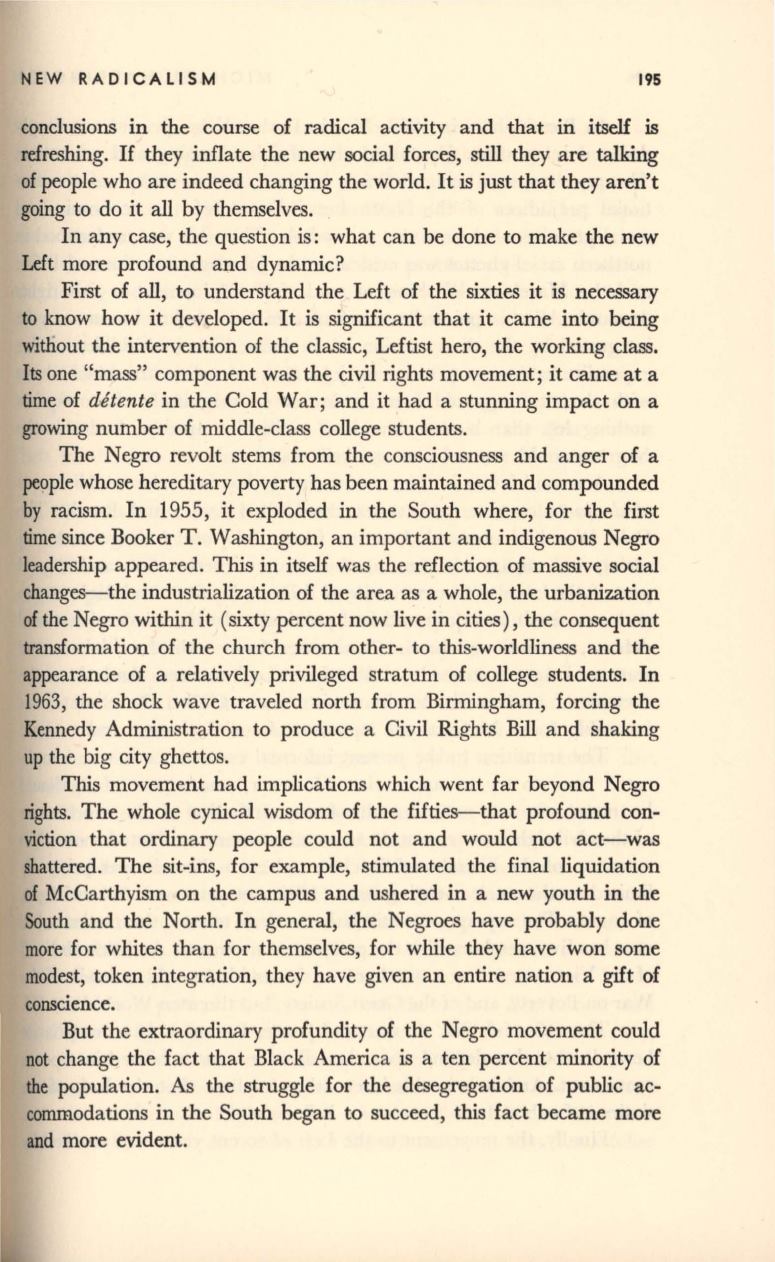
NEW RADICALISM
195
conclusions in the course of radical actlVlty and that in itself
is
refreshing.
If
they inflate the new social forces, still they are talking
of people who are indeed changing the world. It
is
just that they aren't
going to do it all by themselves.
In any case, the question is: what can be done to make the new
Left more profound and dynamic?
First of all, to understand the Left of the sixties it is necessary
to
know how it developed. It is significant that it came into being
without the intervention of the classic, Leftist hero, the working class.
Its one "mass" component was the civil rights movement; it came at a
time of
rUtente
in the Cold War; and it had a stunning impact on a
growing number of middle-class college students.
The Negro revolt stems from the consciousness and anger of a
pe9ple whose hereditary poverty has been maintained and compounded
by
racism. In 1955, it exploded in the South where, for the first
time since Booker T. Washington, an important and indigenous Negro
leadership appeared. This in itself was the reflection of massive social
changes-the industrialization of the area as a whole, the urbanization
of the Negro within it (sixty percent now live in cities), the consequent
transformation of the church from other- to this-worldliness and the
appearance of a relatively privileged stratum of college students. In
1963,
the shock wave traveled north from Birmingham, forcing the
Kennedy Administration to produce a Civil Rights Bill and shaking
up the big city ghettos.
This movement had implications which went far beyond Negro
rights. The whole cynical wisdom of the fifties-that profound con–
viction that ordinary people could not and would not act-was
shattered. The sit-ins, for example, stimulated the final liquidation
of McCarthyism on the campus and ushered in a new youth in the
South and the North. In general, the Negroes have probably done
more for whites than for themselves, for while they have won some
modest, token integration, they have given an entire nation a gift of
conscience.
But the extraordinary profundity of the Negro movement could
not change the fact that Black America is a ten percent minority of
the population.
As
the struggle for the desegregation of public ac–
commodations in the South began to succeed, this fact became more
and more evident.


